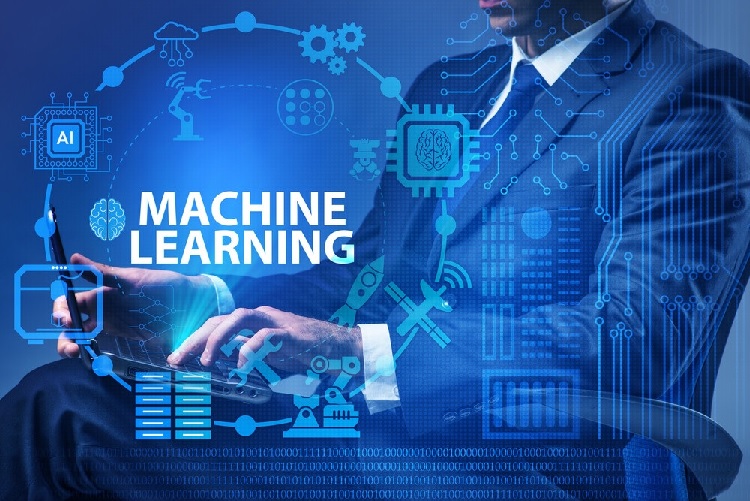Machine learning is becoming so prevalent that business leaders across all industries need to understand it. They may need to explain the technology to others to get buy-in or to help build a shared vocabulary for their teams. Without a clear understanding, mistakes can be costly. For example, if algorithms are trained with biased data sets, they can perpetuate discrimination.
What is Machine Learning?
Artificial intelligence (AI) has a subfield called machine learning that enables computers to learn without explicit programming. It’s behind many things we use today, language translation apps, the shows Netflix recommends, and several other automated tools. It also powers self-driving cars and diagnoses medical conditions from images. Machine learning definition aims to create models that generalize from a given data set and make predictions based on new, unseen data sets. This process is known as training the model. The model will perform better in the future if it is trained on additional data.
A core challenge with machine learning is avoiding overfitting. If a model is trained on data that is too similar to the current sample, it may make predictions that are not accurate and even skewed. A related issue is bias, whereby the model is trained on information reflecting and perpetuating existing inequalities. For example, an algorithm that is fed biased racial or gender data might end up making decisions that are detrimental to people with those identities.
What is Data?
Data can be recorded, measured, observed, or queried. It includes quantitative facts that lack context (like prices, weights, or numbers) and more qualitative things like images, ideas, or language. When machine learning programs process data, it becomes information that has logical meaning for people who receive it. It can be descriptive, which explains why something happened; predictive, which can help predict what will happen; or prescriptive, which can provide suggestions for action. Examples of machine learning include the way Google Translate makes sense of a foreign language or how hedge funds analyze data on car movements in parking lots to make good bets. But despite their promise, the potential for machine learning to exacerbate social problems, including discrimination and bias, is real. Businesses must consider which machine learning tools like Fortinet to deploy and how to use them. It can mean carefully vetting training data and putting organizational support behind initiatives striving to fight against artificial intelligence bias.
What is a Model?
A model is a depiction of a certain feature of an actual circumstance. A model may be physical, such as a plane’s blueprints, or abstract, like a mathematical expression of a behavior pattern. Models convey knowledge about a situation, make a prediction or describe a phenomenon in a way that another person or computer can understand. A machine learning algorithm is a model that learns to recognize patterns in data and then uses this understanding to make predictions for future data sets. Machine learning models are tested against test data to assess their accuracy.
Business leaders should have a working understanding of the basics of machine learning, though they may only need to know some technical details. For example, a machine learning model that is 95% accurate at recommending movies might be enough for Netflix or Google. Still, this level of accuracy would not work for a self-driving car or an industrial manufacturing process. Machine learning is only a universal solution to some business problems.
What is an Algorithm?
An algorithm is a finite sequence of predefined steps to solve problems and perform tasks. It is a set of instructions for computer programs that converts input values into outputs. Algorithms are found in everyday life and are fundamental to computer science and software programs. They determine who gets government benefits, contribute to predictive policing, help predict health crises, reschedule airline flights and more. As you might have guessed from the name, algorithms are sets of instructions that must be extremely precise to be followed by computers. Frequently, instructions like “if,” “then,” and “else” are utilized.
Programmers spend a lot of time fixing errors in their algorithms so that the lines of code work as intended, and they also consider human factors when designing them. For example, an algorithm designed to find the best candidate for a job may consider factors such as university pedigree instead of relevant experience. It is because the person creating the algorithm is optimizing for a specific outcome (in this case, the best candidate). The algorithm does not have a broader view of the situation.
What is a Prediction?
Prediction is a type of guess based on existing data. In a machine learning context, a prediction is an outcome forecasted using data analytics and statistical or machine learning techniques. Predictive analytics is used in all types of industries and organizations. For example, a company may use predictive analysis to predict when equipment will need maintenance. It allows them to preemptively deploy maintenance resources, which can improve operational efficiency by limiting unexpected downtime. The difference between a prediction and an estimate is that estimates are based on estimated parameters, while predictions are based on observed data. It cannot be very clear because some predictions look the same as estimates (for example, a new value x is associated with a value y in OLS) and can have the same mathematical formulas. However, since predictions deal with future events that have yet to happen, they usually come with uncertainty that is not present in estimates. It is because of the nature of randomness. Water divining, astrology, fortune telling, and other methods of divination are also attempts to predict the future, but they have yet to be scientifically proven.

